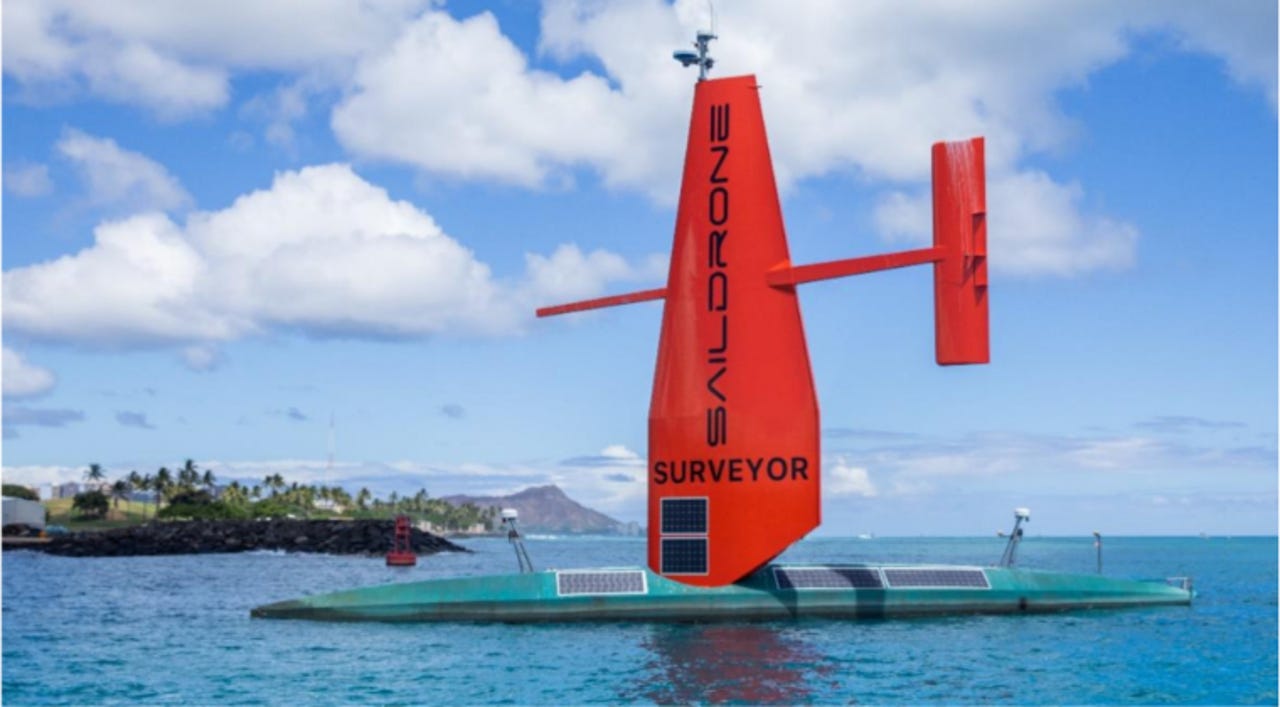No hands on deck: Uncrewed, autonomous 'boat' applies AI, solar power to explore the ocean


Nvidia's Jetson modules also help the USVs handle significant amounts of data processing while running on mostly solar and wind power.
You may be familiar with self-driving autonomous vehicles, but did you know that there are also autonomous vehicles for the ocean?
The US-based startup Saildrone makes autonomous, uncrewed surface vehicles (USVs) with nautical data collection technology that can be used to better explore marine life, weather, ocean floor mapping, and more.
USVs' data collection technology has been used to track hurricanes in the North Atlantic, discover a 3,200-foot underwater mountain in the Pacific Ocean, and start mapping the ocean floor, according to Saildrone.
Also: Bing Chat's enterprise solution is here. This is what it can offer your business
"We've sailed into three major hurricanes, and right through the eye of Hurricane Sam, and all the vehicles came out the other side -- they are pretty robust platforms," said Blythe Towal, vice president of software engineering at Saildrone.
A major benefit of using USVs for ocean exploration is that it enables researchers to collect more data with fewer resources. For example, it can replace the need for a boat and crew, which as a result, keeps more people out of dangerous roles and harm's way.
To complete its missions, Saildrone relies on advanced technology such as AI, enabled by Nvidia's computing technology.
To help process the data streams, Saildrone uses Nvidia Jetson modules for AI, and to further optimize that technology in prototypes, Saildrone uses the Nvidia Deepstream SDK for intelligent video analytics and vision AI applications and services, according to the release.
Also: Microsoft announces Azure AI trio at Inspire 2023
Nvidia's Jetson modules also help the USVs handle significant amounts of data processing while running on mostly solar and wind power.
"With solar power, [we're] able to keep our compute load power efficiency lower than a typical computing platform running GPUs by implementing Nvidia Jetson [which] is important for enabling us to do these kinds of missions," said Towal.
Saildrone is a member of Nvidia Inception, a program that helps startups grow with access to Nvidia technology, experts, and resources, and connects them to venture capitalists and investors.
Also: AI and advanced applications are straining current technology infrastructures
The startup plans to continue using this technology for further research, including a partnership with Seabed 2030 to completely map the world's ocean floors by 2030.